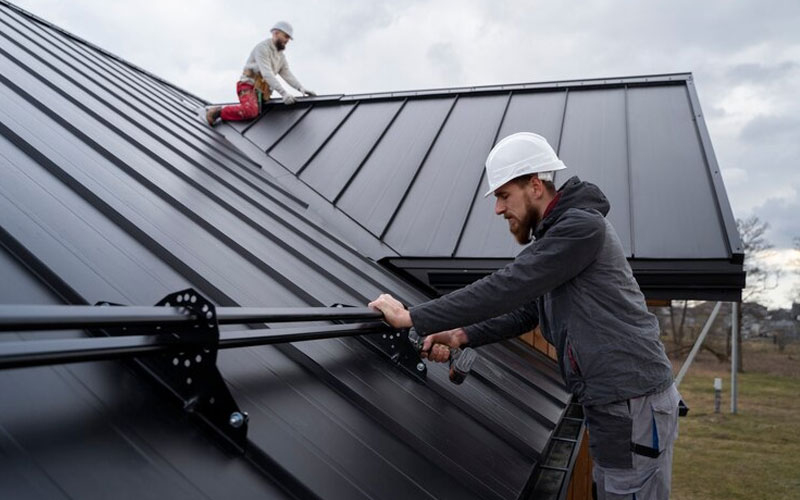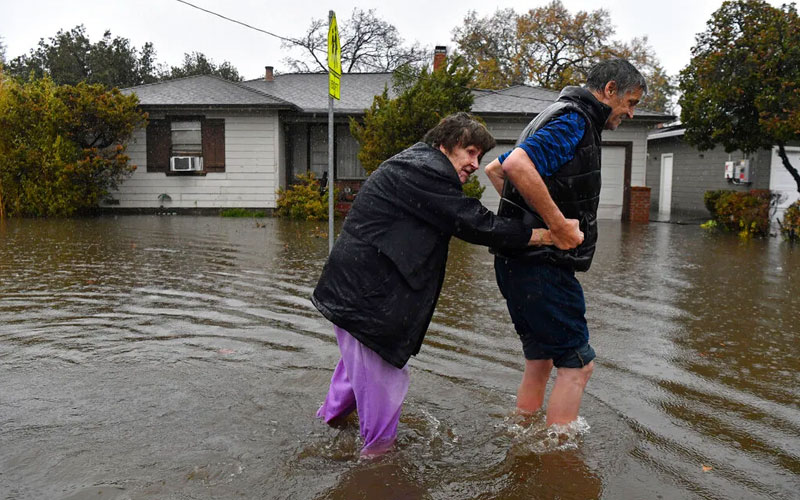
Roof leaks can cause severe damage to a building’s interior and structure. Preventative maintenance and regular inspections can help to avoid costly repairs.
You’ve probably heard the phrase “weather the storm.” It means to make it through a challenging situation relatively unscathed. Here are some tips for protecting your roof during severe weather.
Choose the Right Materials
Many different roofing materials are available, and choosing the right one for your home or business is essential. For instance, metal roofs are highly resilient to varying types of weather. They also provide energy efficiency and are environmentally friendly. Additionally, metal roofs come in multiple colors and designs that can complement any home.
Finding trustworthy roofing contractors is vital if you’re looking to install a new roof. Look for ones with years of experience and a local home base. You should also check their credentials and ensure they have insurance and a contractor license.
Another essential step in protecting your commercial roof is ensuring that it’s properly sealed. Cracked shingles, damaged flashing, and other issues can cause leaks. Having these issues fixed promptly is essential before the damage worsens.
Winter storms can be hard on commercial roofing in Mobile, AL. Ice and wind can lift shingles, which exposes the substructure to moisture and allows water to penetrate the building. That is why it’s essential to have your roof inspected in the winter for any problems that must be addressed. You should also take steps to prepare for a winter storm. For example, you should store important family documents in waterproof containers and identify an out-of-town contact that can act as a point of reference in case the power goes out or your house is evacuated.
Check Your Gutters and Downspouts
If you live in an area that experiences severe storms, it’s essential to be prepared. Have a family emergency plan, and communicate it to everyone so they know what to do if a storm hits. Also, keep important documents safe, such as birth certificates, passports, and insurance policies.
Ensure that your gutters and downspouts are transparent to help prevent flooding in your home during heavy rains. Move outdoor furniture and children’s toys inside to protect them from wind damage. If you don’t have storm shutters, board windows and doors with 5/8 inch exterior-grade or marine plywood. These simple measures will reduce the force of the wind against your home and prevent water from damaging roofs and other areas.
Be aware that even when it seems like the weather has calmed down during a storm, it could be the eye of the shower and will quickly pick up again. Stay indoors and only go outside once you have been reassured by official weather broadcasts that the storm has passed.
If you must travel, drive only if necessary and avoid bridges that might be washed out or swept away by water. Remember that six inches of moving water can knock you off your feet and that just two feet of swiftly flowing water can sweep a car away.
Trim Trees
A lush canopy of trees can enhance the beauty of any property, but it is vital to have regular tree trimming to reduce the risk of storm damage and prevent hazards. Trimming removes dead branches, controls pests, and promotes healthy growth patterns. Additionally, it lessens the chance that overhanging parts prone to breaking off in solid winds would harm your roof.
Untrimmed trees look messy and unkempt, especially after a storm. They can also pose safety risks, as branches hanging too close to buildings or power lines may fall and cause damage.
In addition, overgrown limbs can create a wet, shady environment that attracts pests and promotes the spread of disease. It can cause rot and weaken the tree’s structure, making it more vulnerable to damage from heavy rains or high winds. Regular trimming will prevent these problems by reducing the amount of water and sunlight that reaches the shady areas underneath. It will increase your curb appeal and make your property stand out among the competition!
Don’t Wait for a Leak
The summer’s hot, humid weather can cause damage to the roof without you noticing. Excessive sun can make shingles more brittle and allow moisture to sink into vulnerable cracks in the structure. That is why performing regular roof inspections and maintenance before stormy weather hits is crucial.
These inspections should closely examine the flashing, shingle condition, gutters, and downspouts. If a commercial roofing contractor discovers any issues, they can assist you in choosing the best course of action.
If you find a leak, you must immediately address the issue. A leak can damage your property, create a health hazard through the growth of mold and mildew, and increase your building’s energy costs. A leak can cause other problems, such as water pooling on the floor and causing a slip-and-fall hazard.
If you have any equipment on your roof, such as HVAC systems or other machinery, tie it down before a storm. It will prevent it from being blown around during the storm and sustaining additional damage. Trimming any trees in the area would be best to reduce the likelihood of debris falling on your roof during a storm. Finally, store critical supplies like a tarp, roofing material/patch repair kit, and caulk in a place that’s easy to access so you can immediately begin repairs.







